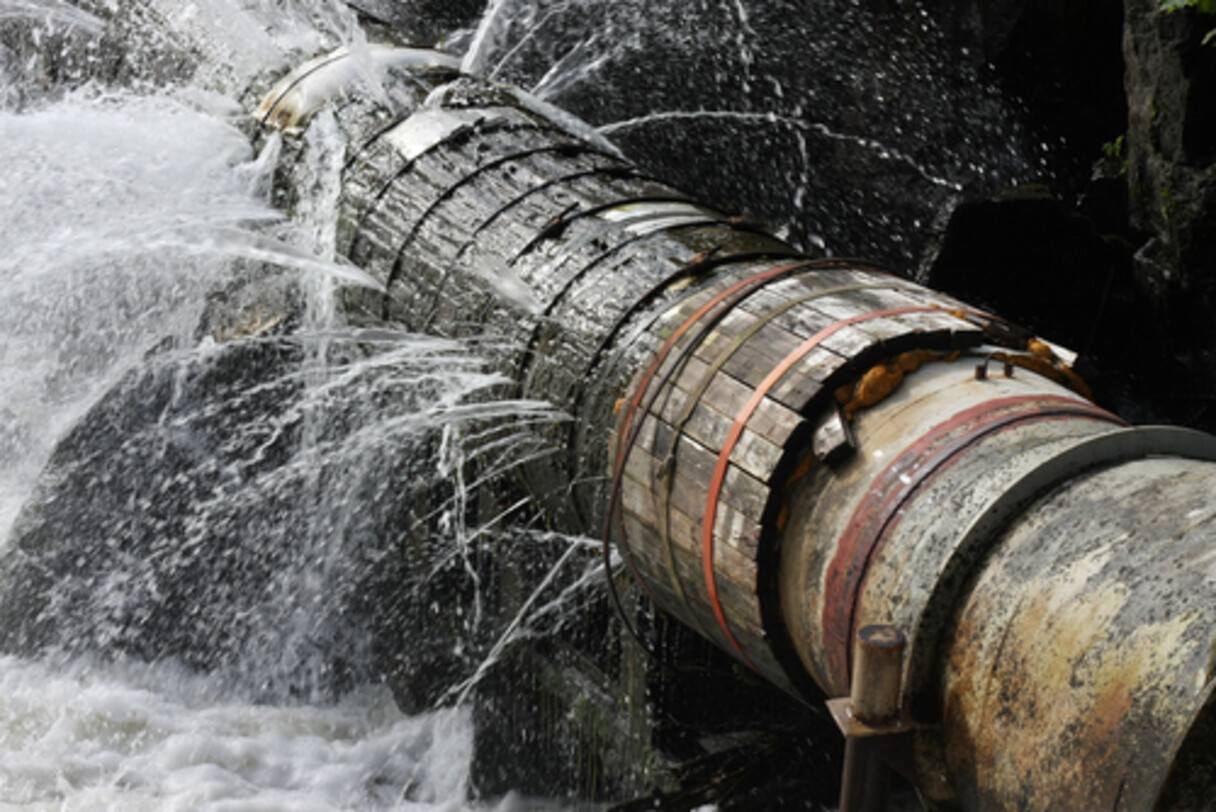Water utilities in the USA lose on average 16% of their water through leaking pipelines. This means that 16% of produced water never reaches their customers. Imagine Coca Cola or PepsiCo losing 16% of their product between leaving the factory and reaching their customers. And not just one year, but many years in a row! Would they still be in business?
Water loss is a waste of valuable resources and negatively impacts cost recovery of water services.

Leaking pipelines can sometimes go unnoticed for a long time.
In the Netherlands, non-revenue water (NRW) comprises about 6% of the total amount of drinking water produced. According to figures published by the Dutch branch organisation of drinking water utilities, Vewin, an annual 116 million cubic metres of water treated partly or wholly to drinking water standards does not reach a private or business consumer. Some of this is unavoidable, such as the water needed for firefighting. But if the remaining water loss could be reduced by 70%, water utilities could supply an extra 750,000 households with their daily water, without increasing the pressure on existing water sources.
Sensor technologies which enable rapid detection of leaks help to improve insight into the state of underground water infrastructure and support the prioritisation of pipe renewal and replacement. Sensors help to define a viable business case, so that investments result in maximum benefits for both the utility and its customers. During production, online sensors for process monitoring currently consume a considerable amount of water, leading to increased production losses. Research by Sensileau's experts has shown, however, that such losses can be significantly reduced (up to 90%) by selecting the right technology and implemeting it at the right location. With more an more inline sensor technologies becoming available, a further reduction in water loss can be accomplished.
Water utilities worldwide lose US$ 14 billion in non-revenue water per year (Worldbank)
75% of leakage events are avoidable (US EPA)
Webinar
A watertight approach to the distribution network - Revealing the hidden problems in the distribution network using AI and data science
The distribution network has long been considered a black box, with treated water going in at one end, and tap water coming out at the other. However, this black box can hide a number of problems, and the fact that the infrastructure is largely underground makes it difficult to detect these problems in a timely manner. Data science can help to predict or even to prevent certain problems, ranging from water quality to quantity issues, thus creating a win-win situation for all parties involved.
This webinar focuses on the water distribution network: Revealing the hidden problems in the distribution network using AI and Data Science. It addresses the developments in both sensor technologies and advanced data analysis tools in order to facilitate process optimisation.
While AI and machine learning approaches are already being applied in a range of asset management scenarios, our speaker, Matthew Stephenson of HAL24K, moves away from the well-known examples and presents the latest thinking about how to deal with the hidden, and sometimes uncomfortable, problems that occur in the distribution network which he believes could be solved with a well-designed data science approach.
This webinar is the first episode of our series A Watertight Approach to ...
Podcast
This podcast is the first in our thematical series A Watertight Approach to... This episode is called ‘A Watertight Approach to AI Solutions for Drinking Water Asset Management’, and contains an interview with Matthew Stephenson of Hal24k.
This podcast was recorded on January 20th, 2022.
Showcase
Event detection in the distribution network and stakeholder involvement in action programmes
Drinking Water Utility A in the USA uses its online sensors for a wide variety of reasons, including the understanding of hydrodynamics and water quality and trouble shooting. Online sensors for e.g. conductivity are very effective at understanding water movements and mixing in a distribution system. When issues arise, online water quality data is useful in diagnosing the problems and in developing options for resolution.
The combination of grab samples and online monitoring helped identify areas of low usage/flow and oversized mains in the distribution system. DW-A was able to demonstrate significant detection of water quality issues with online sensor data.
